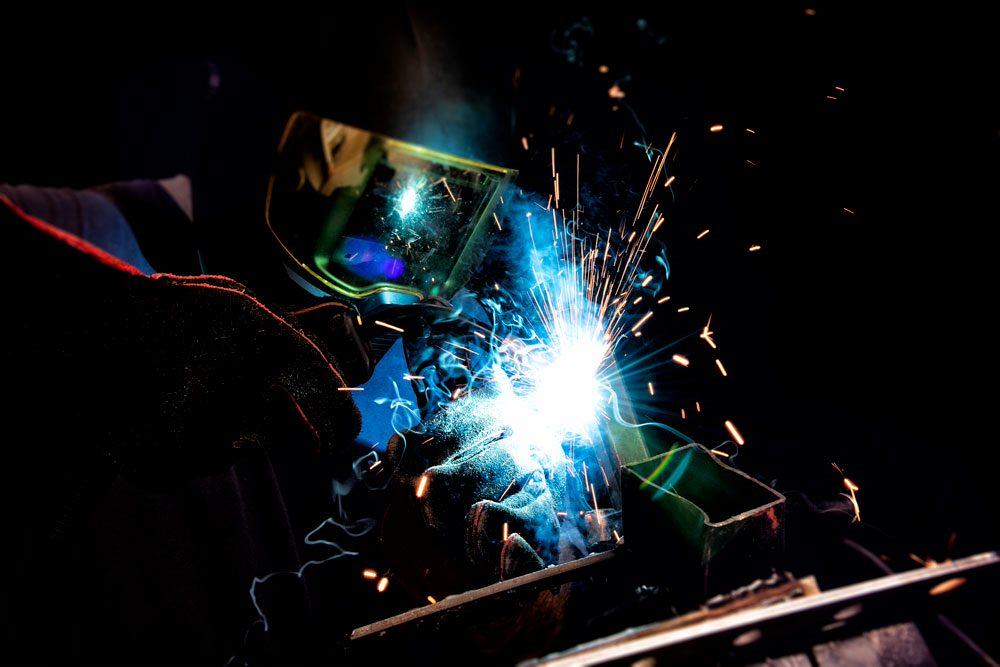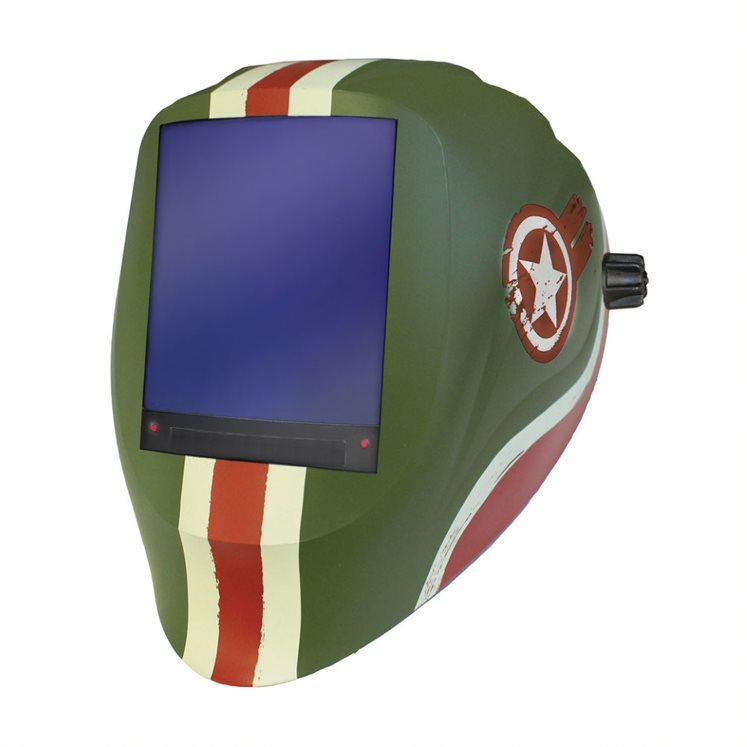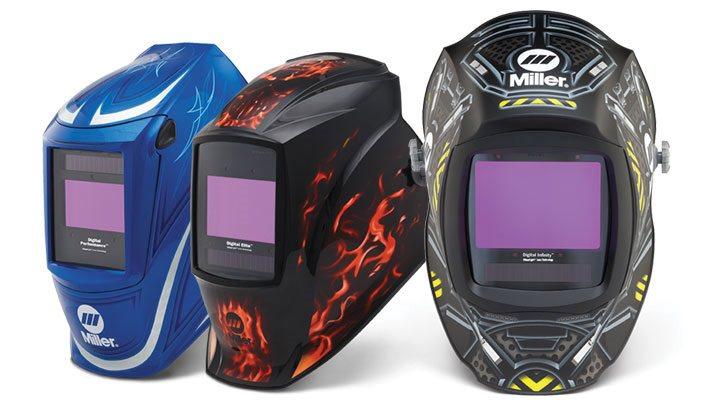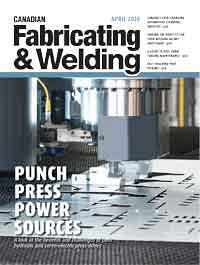Editor
- FMA
- The Fabricator
- FABTECH
- Canadian Metalworking
Finding the right fit for your helmet investment
A look at some of the latest welding helmet designs in the market
- By Rob Colman
- Updated May 25, 2020
- June 5, 2020
- Article
- Welding
Investing in a welding helmet is always a balance between budget considerations and what you need for the work you’re doing. Safety, of course, comes first; but ergonomics and integration with other personal protective equipment are both becoming recognized as key aspects for creating efficiencies in the welding shop.
This month we’re taking a look at a variety of the newest helmets released in the market in the past year. Are you looking for a lightweight workhorse? An advanced system for a challenging job? A more reactive lens for the variety of work you do? Examples of all of these options are included here.
Comfort and Usability
Würth is a comparatively new entrant into the welding helmet space in Canada, although its products have been available in Germany for some time. In Europe it’s known for higher-end helmet models equipped with respirator systems and other items important in heavy-duty work. But for entry into the Canadian market the company focused on developing the more cost-effective Solar and Solar+ models, which are suitable for small shops doing a variety of work, including stick welding (DC and AC), TIG (DC, DC pulse), TIG AC (pulse), MIG/MAG pulse, and plasma cutting.
The autodarkening feature on the helmet offers shade ranges between 9 and 13, which handle basic welding requirements.
The helmets are ergonomically designed for comfort and protection. They include a four-way-adjustable headband to help them fit precisely. The design aims to draw smoke away from the welder, as well as doing the basic job of protecting the neck, face, and crown from weld spatter and heat. The company also notes that the helmets protect against weld spatter during overhead welding.
Würth Canada
Canadian Style, Upgraded Comfort, Vision
Lincoln Electric’s Viking 3350 series welding helmet is now offered in a Canada-themed graphic named Polar Arc. Besides the fun Canadian-designed look, the helmet includes a number of technical and visual comfort upgrades to make it a versatile option.
The company’s 4C lens technology, for instance, is designed to broaden the colour range and hues that can be seen in both light and dark states of the liquid crystal autodarkening lens. The goal is to eliminate imperfections and colour saturation to get a better view of the material, arc, and puddle.
The lens has an optical clarity of 1/1/1/1. This rating is determined by measuring blurriness, distortion, shade consistency, and angle uniformity of the autodarkening welding lens. The last number of the four refers to how the welder can view items in the lens at an angle. In helmets with a 2 rating in this field, for instance, the shade often darkens when the welder looks through the lens at an angle. This is simply one extra level of precision in the viewing area. The lens on the helmet has a 12.5-sq.-in. viewing area.
The company’s X6 headgear, meanwhile, is designed to distribute weight, reduce pressure, and optimize the balance of the helmet by providing six points of contact on the operator’s head.
The helmet also includes an external low-profile grind control button, making it possible to move from welding to grinding quickly without removing the helmet.
Lincoln Electric
Clear Optics, Large Lens
ArcOne, the welding equipment manufacturer recently purchased by Pointe-Claire, Que.-based Walter Surface Technologies, has developed the BFF, a large autodarkening lens that the company also believes to be the clearest.
The lens has a light state of 3, the brightness of which allows the operator to work comfortably with his mask down as much as possible – both a safety and productivity benefit. It has a dark state of between 5 and 13 and includes a grind mode. It has three sensors to detect light changes and a 17-sq.-in. viewing area.
The company recommends pairing the BFF with the ArcOne Vision welding helmet. The helmet comes in black and a range of decals.
ArcOne
Controlled Views
ESAB Welding & Cutting Products’ Savage A40 automatic welding helmet was designed to provide functionality for the occasional and professional welder at an attractive price, according to the company. It uses the company’s ultra-clear True Color lens technology to enhance the view of the weld puddle and surrounding area. This is important for welders who require precise bead placement.
The helmet includes an externally activated “grind” button. Even while wearing a heavy glove, welders can activate a shade 4 grind mode on the left side of the helmet. Grind mode may be suitable for cutting processes as well.
The helmet’s viewing technology is based on a 1/1/1/2 optical class lens and with a 9 to 13 shade adjustment. The lens has a 3.93- by 1.96-in. viewing area and four sensors, the additional sensors being particularly useful when welding out of position.
Sensitivity and delay controls inside the helmet let users adjust the response to various welding conditions. Sensitivity control is an adaptable feature useful for low-amp GTAW for better reaction to darker arc light. Delay control enables the welder to set how long the lens stays dark after the welding arc stops. Short delay helps get the job done faster during tack welding, for instance, while longer delay is useful for high-amperage welding.
ESAB Welding & Cutting Products
Lens Tech Expansion
Miller Electric Mfg. Co. recently expanded its ClearLight lens technology to all its digital welding helmets. The purpose of the technology is to optimize clarity for welding operators.
According to the company, the technology optimizes contrast and clarity in both welding and light states so that operators see natural colour tones and get a crisp, high-definition view of the workpiece. Previously available only in Miller T94 series autodarkening helmets, ClearLight has now been expanded to all Miller digital helmets to include Digital Infinity, Digital Elite, and Digital Performance models.
The technology enhances clarity by allowing more colours to come through the lens. Where other lenses often produce a view with a greenish-yellow or blue tint, this lens provides truer colours during welding. This means operators see more contrast among objects in the viewing area, resulting in reduced eye strain and fatigue.
The lens has a 1/1/1/2 optical clarity rating and allows a true 3 light state.
Miller Electric Mfg. Co.
Heavy-duty Indoor Arc Welding
The 3M Speedglas Heavy Duty Welding Helmet G5-01 is designed for heavy duty indoor arc welding and is paired with a respirator system to deliver a constant flow of air to the welder. It won the 2019 International Red Dot Design Award for its product design excellence, being described as a “sterling example of combining individualization options, improved functionality, and streamlined design.”
3M Speedglas Variable Color Technology has been introduced on this helmet to provide a better view of the weld puddle; the welder can now choose between natural, cool, or warm tones for the dark state. There are also two options available for the mask’s autodarkening filter (ADF), both offering the technology described here for great clarity before, during, and after welding, the company states. A Bluetooth app option allows the welder to change their ADF settings from a smartphone.
The helmet connects to the 3M Adflo powered air purifying respirator to provide up to 1,000 APF with the right accessories. For conditions where supplied air is required, the welder can use the company’s Versaflo supplied air valves.
The helmet’s duct system allows the welder to direct airflow to either his face, visor, or somewhere in between. The amount of air coming from the top outlet or the two side outlets also can be adjusted.
The helmet’s flip-up welding visor has two external, recessed dials that hold it in place. For extended non-welding work, the welding visor can be removed by unscrewing the two dials. The new headband design has improved with self-adjusting paddles along the forehead and a rotation stopper to simplify the donning of the helmet. Adjustment options let the welder better control the distance and angle from their eyes to the clear visor and welding filter.
A new, optional helmet-mounted task light is also available for this helmet. It runs off the Adflo’s battery pack.
3M
About the Author

Rob Colman
1154 Warden Avenue
Toronto, M1R 0A1 Canada
905-235-0471
Robert Colman has worked as a writer and editor for more than 25 years, covering the needs of a variety of trades. He has been dedicated to the metalworking industry for the past 13 years, serving as editor for Metalworking Production & Purchasing (MP&P) and, since January 2016, the editor of Canadian Fabricating & Welding. He graduated with a B.A. degree from McGill University and a Master’s degree from UBC.
subscribe now


Keep up to date with the latest news, events, and technology for all things metal from our pair of monthly magazines written specifically for Canadian manufacturers!
Start Your Free Subscription- Trending Articles
Aluminum MIG welding wire upgraded with a proprietary and patented surface treatment technology

CWB Group launches full-cycle assessment and training program

Achieving success with mechanized plasma cutting

Hypertherm Associates partners with Rapyuta Robotics

Brushless copper tubing cutter adjusts to ODs up to 2-1/8 in.

- Industry Events
MME Winnipeg
- April 30, 2024
- Winnipeg, ON Canada
CTMA Economic Uncertainty: Helping You Navigate Windsor Seminar
- April 30, 2024
- Windsor, ON Canada
CTMA Economic Uncertainty: Helping You Navigate Kitchener Seminar
- May 2, 2024
- Kitchener, ON Canada
Automate 2024
- May 6 - 9, 2024
- Chicago, IL
ANCA Open House
- May 7 - 8, 2024
- Wixom, MI





















